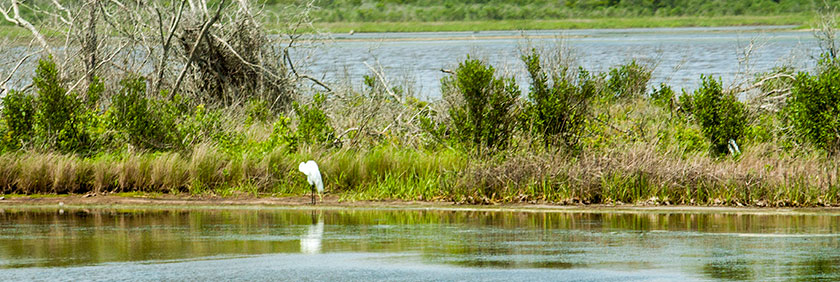Mission
Creating a healthier Eastern Shore.
Vision
We imagine a healthier Eastern Shore emerging from livable communities where children and adults have healthy eating choices at home, school and work; walk and bicycle safely; play or exercise outdoors, in neighborhood parks, trails, and open spaces; and enjoy a tobacco-free community.
Our Case for Support
Imagine
Eastern Shore Healthy Communities (ESHC) imagines healthy communities for children and adults that have healthy food choices at home, school and work; where people can walk and bicycle safely; play and exercise outdoors in neighborhood parks and open spaces; and enjoy a tobacco-free community. We seek to engage and motivate local governments, businesses, restaurants, schools, faith communities and health care organizations to create a healthier Eastern Shore. As a united community partnership we are turning to our community to help. ESHC hopes you will not only imagine with us but that you will also help us build livable, healthy communities on the Eastern Shore.
Established in 2009, ESHC began organizing partners who shared the same vision: to create healthy communities on the Eastern Shore. Our partnership joins the momentum created by the Department of Health and Human Services (DHHS) and the Center for Disease Control (CDC) in addressing the obesity statistics and concerns in America. Bringing it close to home, leaders in our community have joined together and established priorities and strategies while representatives from all health and human service organizations have begun creating and implementing programs supporting our vision.
Statistics indicate that among Virginia’s 35 health districts, the Eastern Shore has the greatest proportion of overweight adults. Of adults living on the Shore 31% are obese. We know the greatest single risk factor for children who are overweight and obese is having an overweight or obese parent. We also know obesity leads to chronic diseases such as type II diabetes, arthritis and heart disease. It is associated with high absenteeism in school and at work. We also know that these diseases reduce quality of life, can be very costly and can lead to early death. We recognize controllable risk factors such as healthy food choices, exercise participation, and tobacco avoidance contribute to the health and well being of our community. Sadly, despite the smoking cessation efforts made nationally and locally, we recognize that over 21% of adults on the Shore still smoke. We are keenly aware that a healthy community is not only a community absent of disease but one that is active, engaged in community efforts, productive and one that prioritizes the general well-being of the entire Eastern Shore.
ESHC imagines livable, healthy communities where every business, educational and health care institution, restaurant and government office has not only smoke-free buildings but campuses. ESHC imagines having affordable housing, safe places for exercise such as parks and recreation facilities, a vibrant food environment with healthy food choices. We are prepared for the challenge!
Build
ESHC recommends the adoption of the Livable Communities concept. These are communities that are economically competitive, have a range of housing types for different incomes and ages; offer transportation options including sidewalks, bicycle trails and public transit; and locate community facilities such as parks, schools, libraries, and health facilities centrally to encourage walking, exercise, and active living. Let us take a moment to discuss our building blocks.
Supporting and collaborating with existing communities is essential. By partnering with our communities and local government, we can revitalize businesses and housing, provide more efficient public services, and conserve the rural landscape for farming, forestry, wildlife and fisheries. Collectively our accomplishments can be great.
Encouraging affordable housing is crucial. When housing is built in existing communities with available water and sewer, lots can be smaller and more affordable. A range of housing types such as single-family, duplex, and apartments can be offered. Quality rental housing can be provided for expanding businesses and new workers. By locating housing within walking distance of businesses and near community services, we are less dependent on cars.
Providing transportation choices is vital. Constructing safe bicycle trails and sidewalks within communities and businesses offers alternative means to travel and encourages exercise. Capitalizing and building upon our public transit system will improve access to jobs, healthcare and other necessary destinations and reduce the need for multiple car ownership.
Environments can encourage individuals to be more physically active. Establishing parks, recreational and cultural facilities that are accessible is fundamental to the livable communities concept. Building schools where children and adults can walk to, play and enjoy the outdoors, and get needed exercise every day is important. We can provide a healthy food environment by encouraging and supporting community gardens, farmers’ markets, and farm-to-school programs.
Influence
The Eastern Shore community is known for its pristine, natural amenities and the dedication of people to improving the quality of life for all Shore residents and for folks who visit. Counties, towns, villages and schools play key roles in the creation and support of healthy, livable communities. Local government leaders have the unique ability to convene key decision-makers, enable information flow and collaboration, promote important community issues, and establish policies that create environments in which children and their families have healthy, safe choices.
ESHC believes our imagination can become a reality. We know we can inspire people to help us build healthy, livable communities. We recognize that together we can help influence change in the way we think about health and wellness yielding a healthier Eastern Shore.
References
Local Government Commission, retrieved November 28, 2010 from http://www.lgc.org/about/index.html
MacKay, A.P., Duran, C. (2007). Adolescent health in the United States, 2007. National Center for Health Statistics. Retrieved March 26, 2009 from http://www.cdc.gov/nchs/data/misc/adolescent2007.pdf.
National Center for Chronic Disease Prevention and Health Promotion (2010). Adult Obesity: Obesity rises among adults. Vitalsigns, August 2010. Retrieved November 28, 2010 from http://www.cdc.gov/VitalSigns/pdf/2010-08-vitalsigns.pdf
Sepulveda, M.J., Tait, F., Zimmerman, E., Edington, D. (2010). Impact of childhood obesity on employers. Health Affairs, 29 (3), 513-521.


